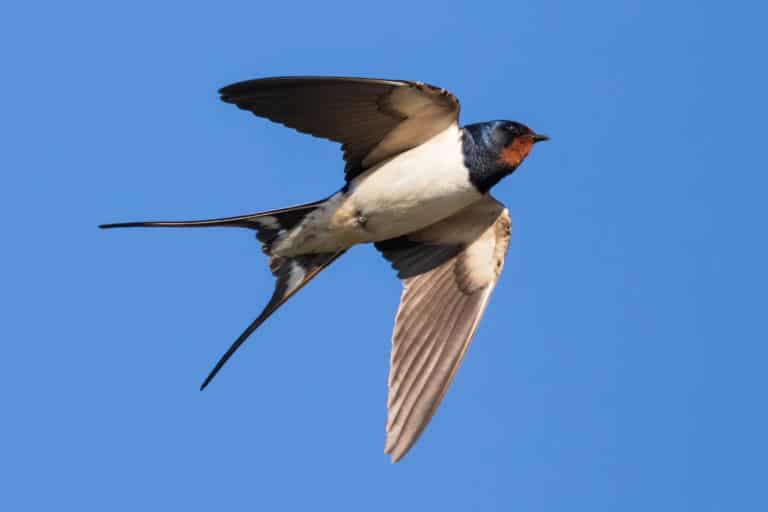Ever wondered what it’s like to attend one of our natural history courses?
Sarah, from our Marketing Team, tagged along on the ‘Identifying Summer Birds by Sight and Sound’ course at Rhyd y Creuau to get to know the different species calling North Wales home for the summer.
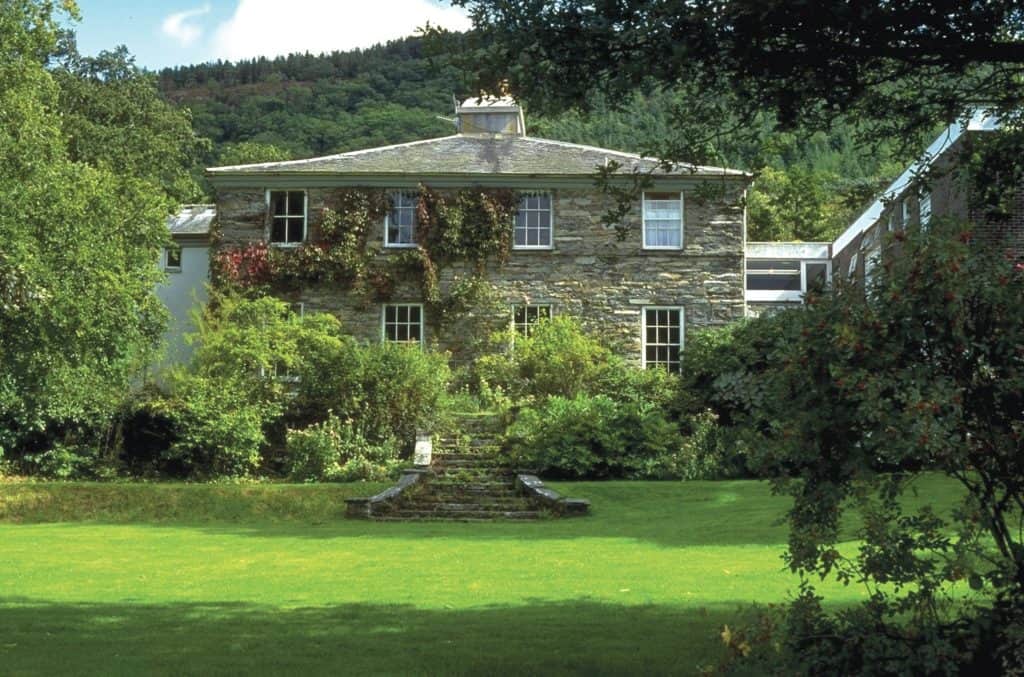
Rhyd Y Creuau Field Centre is in the heart of the Snowdonia National Park, just outside Betws Y Coed. It’s surrounded by woodland and farmland and is an ideal location to learn about the natural world for anyone with a love of North Wales.
We first of all met with tutor, Anne Brenchley, in the ‘Y Garn’ classroom, named after a popular peak in the Ogwen Valley. We got to know our fellow bird enthusiasts and explained what had brought us to attend the course. All of us were beginners, our existing knowledge came from watching birds in our gardens or whilst out walking.
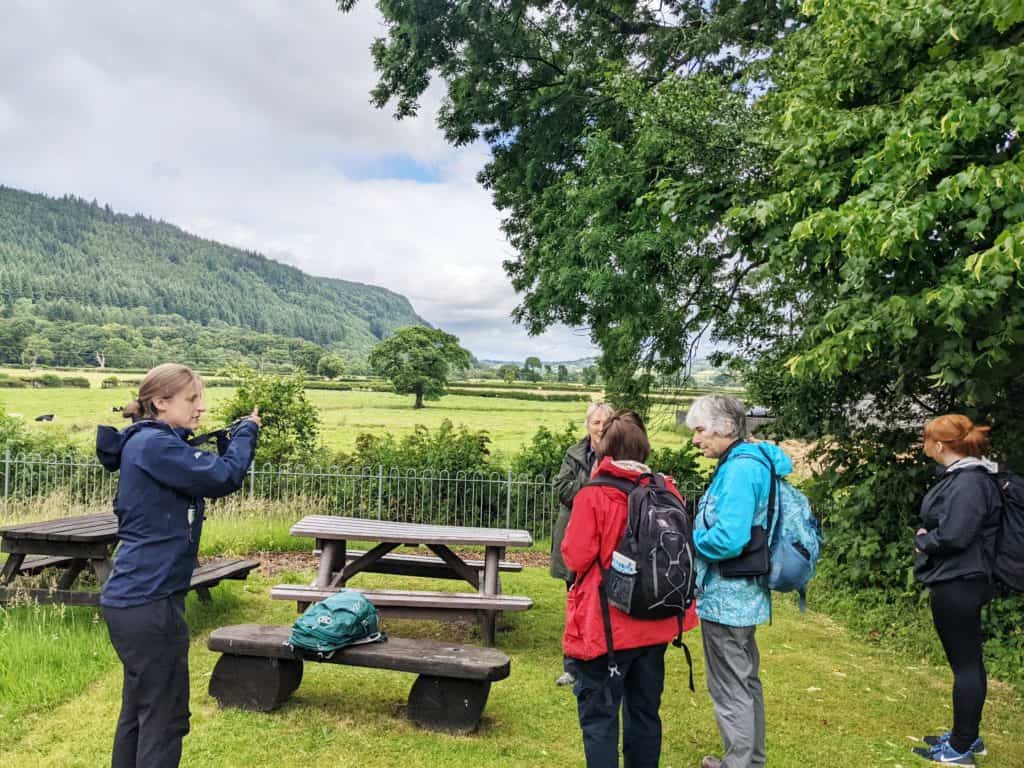
After our introductions, we wasted no time in getting outside to explore the birds within the grounds of Rhyd Y Creuau. Anne gave us a briefing on binoculars and we got them ready to start our bird watching.
Stepping outside the front door, we really didn’t have to go far before we saw our first birds. Looking up to the eaves of the building, we could see two house martin nests. The nests were very active and even from the ground we could spot the chicks peeking out.

After a little observation, we noticed a family of sparrows had taken over one of the nests and they were very vocal, giving us a fantastic example of sparrow song.
Looking across the field to a neighbouring farm, we could see a lot of action. Swallows were swooping through the sky, back and forth from field to barn. Anne told us how to identify swallows as they can be confused with swifts and even house martins.
We also spotted pied wagtails in the field and a great white egret, which was unusual, but we weren’t too far away from the River Conwy so the egret was obviously having a little explore.
Walking back towards the centre buildings, we spotted a juvenile song thrush wandering along the path darting in and out of the shrubs.
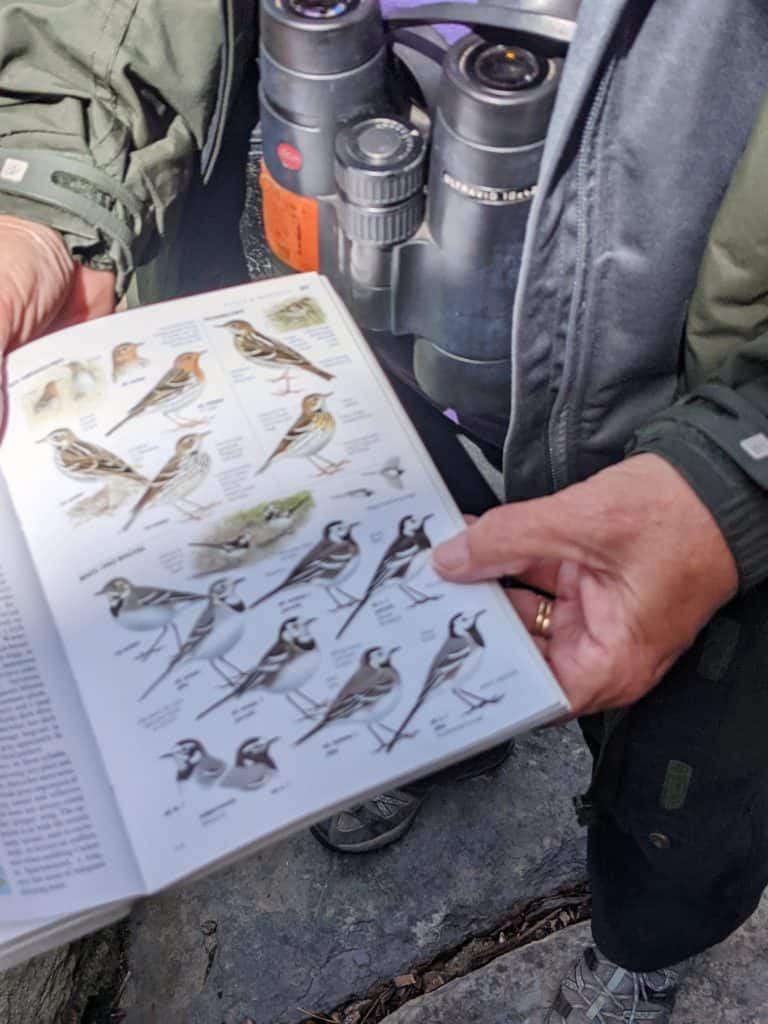
We were also very lucky to see a pied wagtail nest in the Ivy which was growing on the building. We were very close so were able to see a lot of detail. Anne then showed us how to identify male, female and juvenile pied wagtails.
During summer, male pied wagtails have a white forehead, cheeks and belly with a black mantle, head, throat and breast. Their back is grey while females are darker grey with a black crown, throat, breast, rump and tail.
Further around the grounds we spotted carrion crows in the field behind the centre, who were quite happy mooching in and out of a herd of sheep.
We then came across a number of tit boxes which appeared empty. Anne explained that tit’s usually only have one brood and by late June, they will have fledged.
While we were looking at the tit boxes, we noticed a robin with its young, a freshly fledged chick which had settled in the middle of a path. The mother robin was off collecting food and kept returning to feed the fledgling. It was lovely to see how dependent the fledgling still was of its mother and the nurturing taking place.
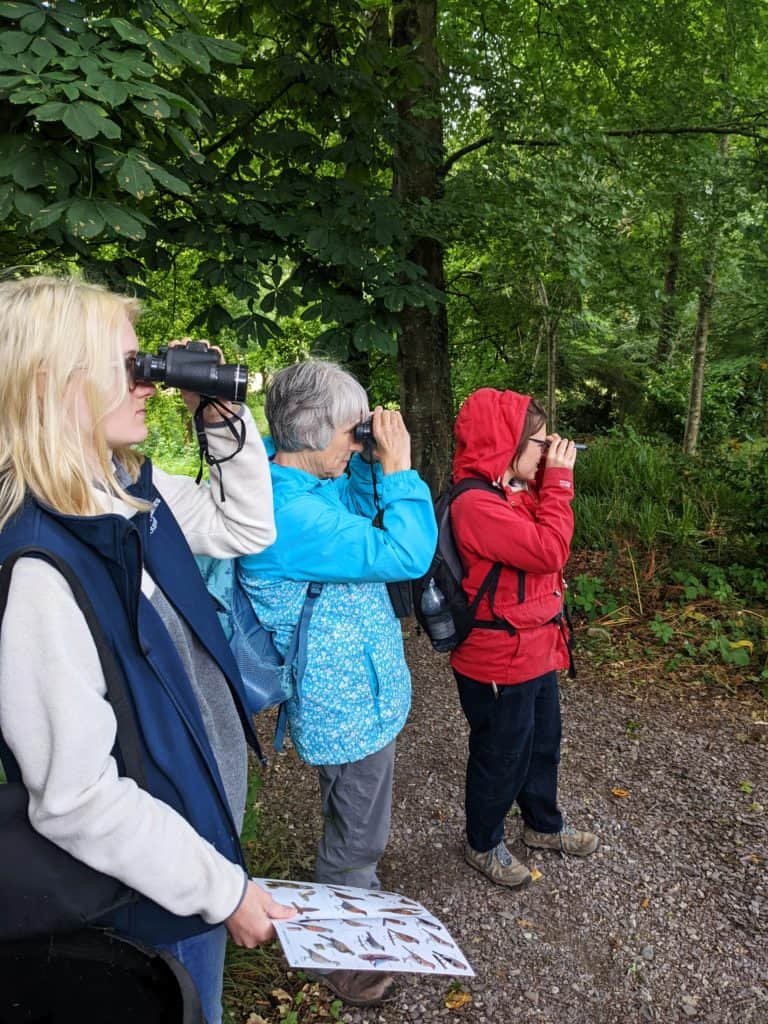
It then started to rain quite heavily, so we sheltered under a canopy. Anne explained during the rain that the birds would hunker down and shelter just like we were. Once the showers had stopped, we could hear a wren singing, Anne knew it was a wren as they are well known for their trills and beautiful bird song.
It then started to rain more heavily, so we returned to the classroom for lunch and the conversation turned to the nightjar.
After watching Chris Packham’s fascination with the bird on BBC Springwatch earlier that week, I brought the bird up and asked Anne if it’s a bird you could see in Snowdonia. Anne explained that if we’d of had a better weather forecast, she’d have taken us up to the Gwydyr Forest where you can hear nightjars in June at dusk, if you’re lucky.
Visit to RSPB Conwy Nature Reserve
After lunch we all jumped into the mini bus to travel to RSPB Conwy Nature Reserve. Anne had booked us in for a visit there to see waders and other birds usually found in wetland habitats.
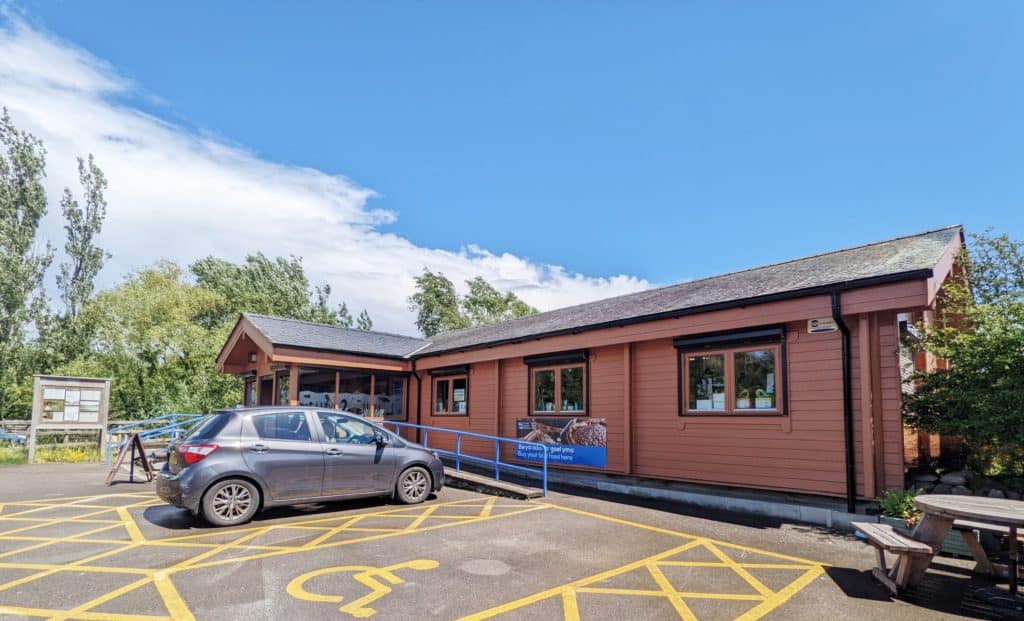
It got off to a fantastic start, in the first hide closest to the visitor centre, we could see in the distance a heronry, a colony of nesting herons that had taken over an area of tall trees across the estuary. Anne explained that it was private land and as it overlooked the estuary, it was the ideal quiet spot for them to raise their young.
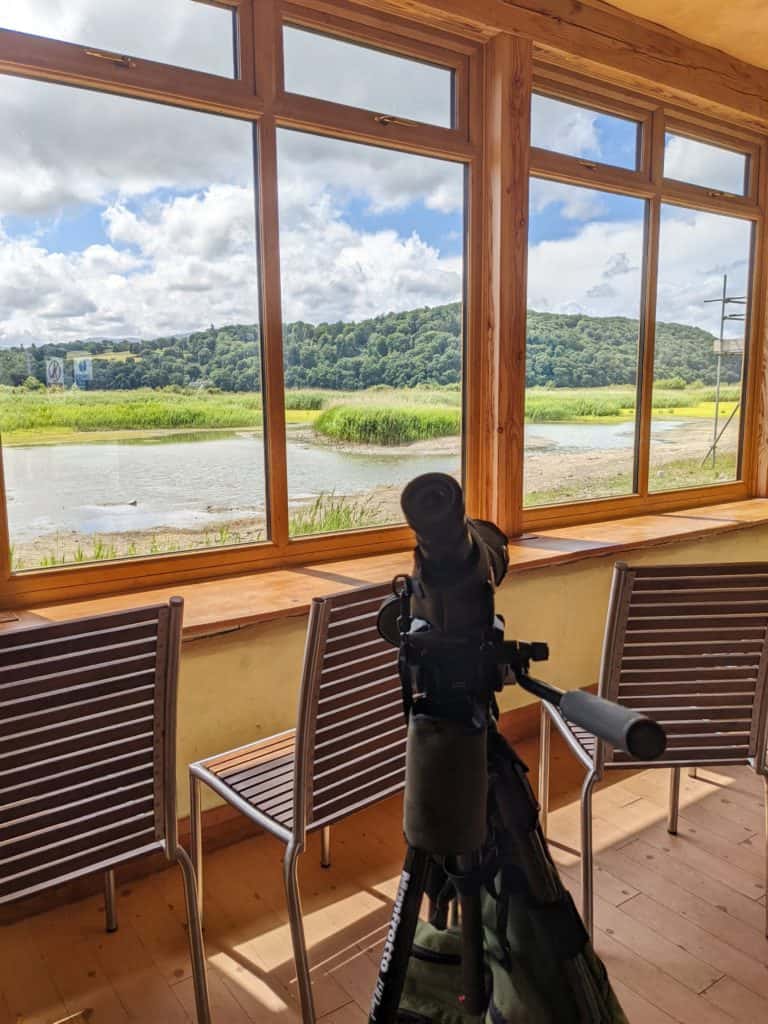
We saw a vast array of bird species here, black tailed godwit, more egrets and the stunning lapwing which really did take some spotting.
Of course, there were plenty of herring gulls flying and easily identifiable along the waters edge, also known as a ‘seagull’. Luckily, we’d had lunch so there wasn’t any food for them to pinch.
The bird spotting didn’t stop there, even walking between hides we spotted great tits and juvenile blue tits at a feeding station.
Further round the reserve we got the chance to see a cluster of greylag geese, black headed gulls and sand martins swooping across our view.
We’d been told on arrival to the reserve that there was a pair of oystercatchers with three chicks that had not long hatched. We spotted them about half way round and what a sight to behold. They had made their nest on a small rocky ridge surrounded by water. It was a little island which gave them added protection against predators. Each time one of the adult oystercatchers flew away from the nest, on their return, the three little chicks would go running over to greet them. It was a wonderful sight and we were very lucky to see them.
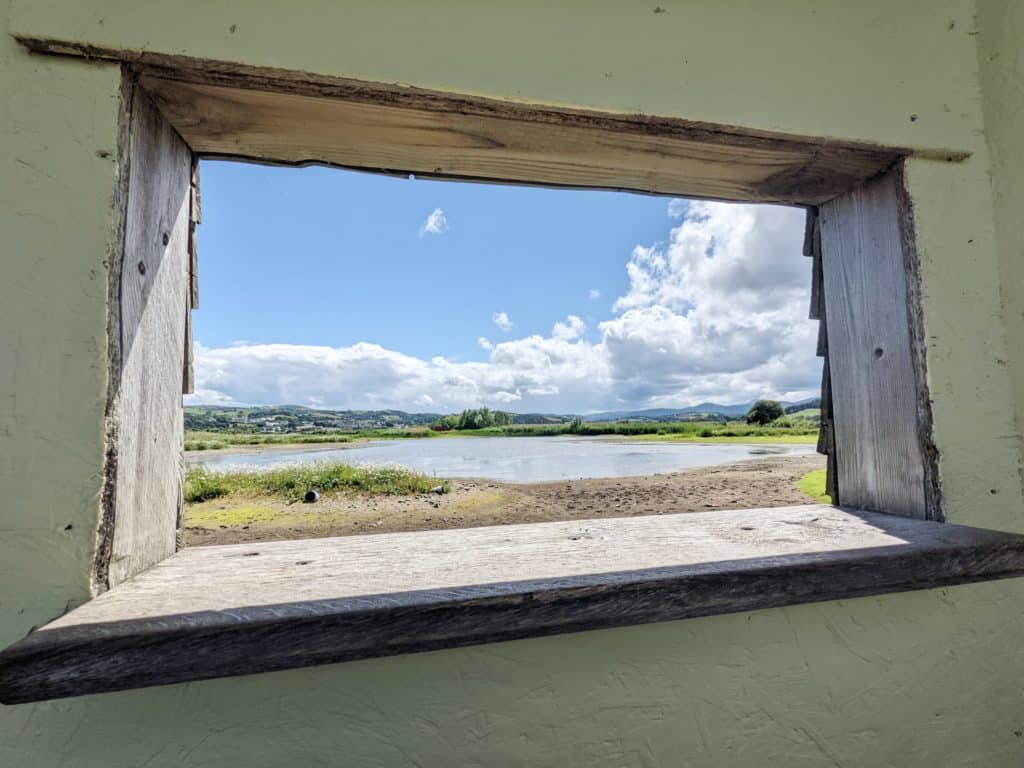
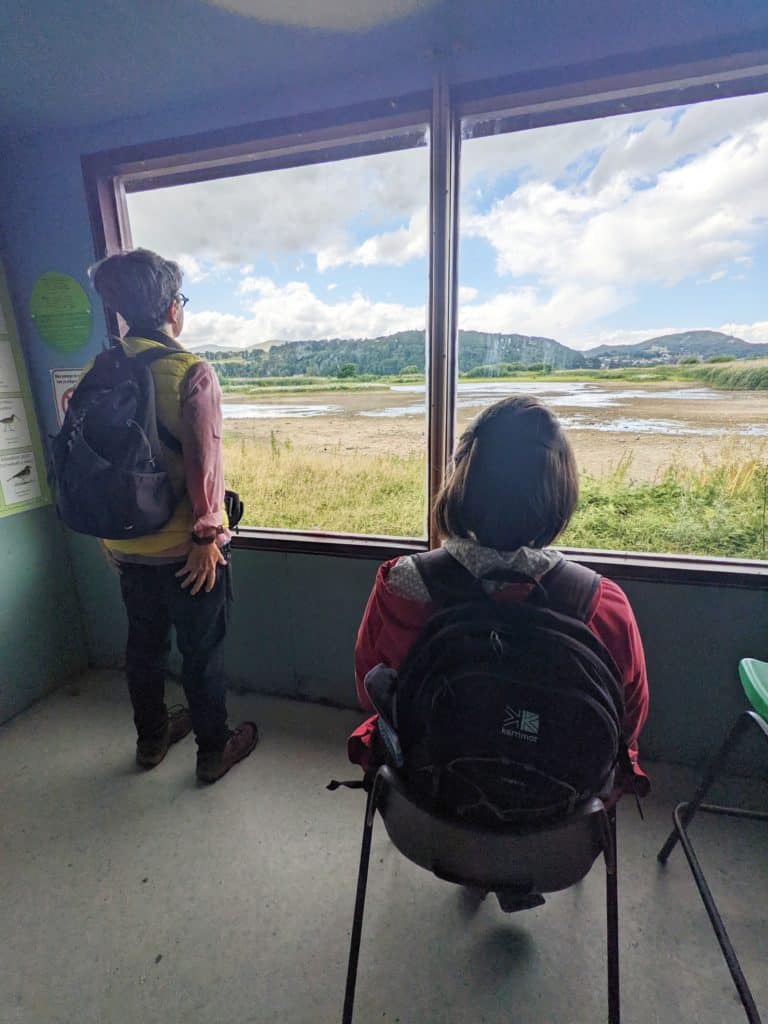
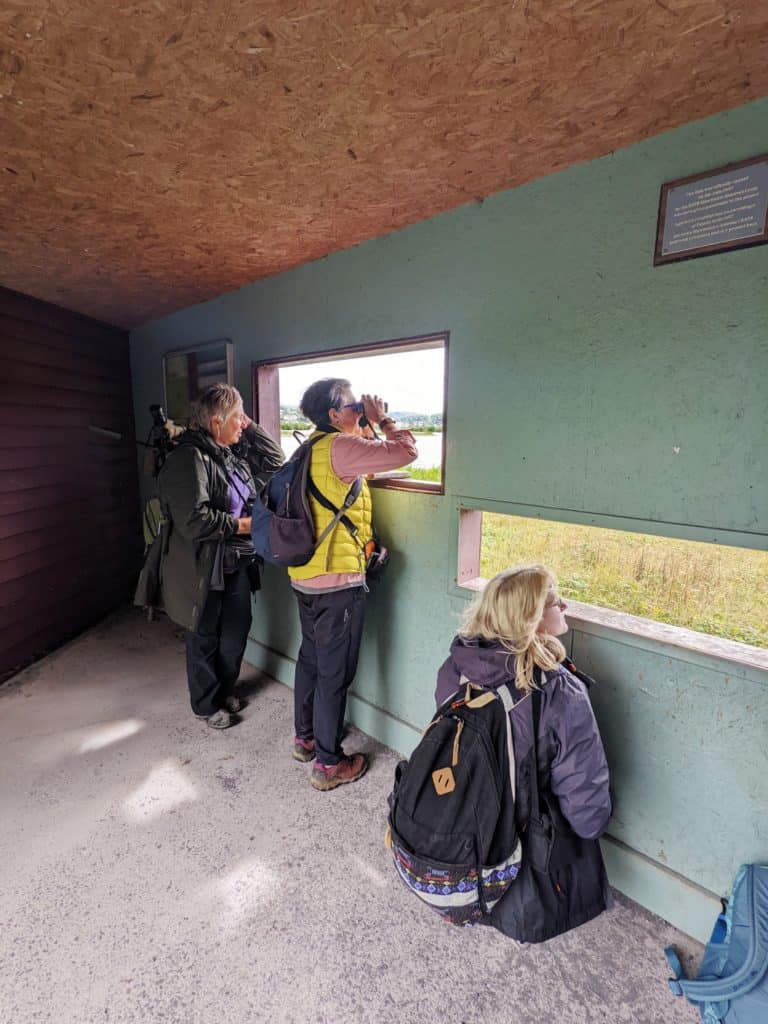
The bird safari continued further around the reserve, seeing lesser black backed gulls, Canada geese, male tufted ducks, great crested grebes and some speedy little redshanks with their bright red legs.
It was finally time for us to head back. When walking along the trails, one of the group spotted a fox cross our path, but the majority of us were looking up to the skies, so we sadly missed it.
We then started to pay attention to the ground as well and Anne pointed out a bee orchid. A bee orchid’s flowers mimic a bumblebee, and even smell like a female bee. There was a cluster of them just growing on the side of the path. This was something a lot of the group hadn’t seen before.
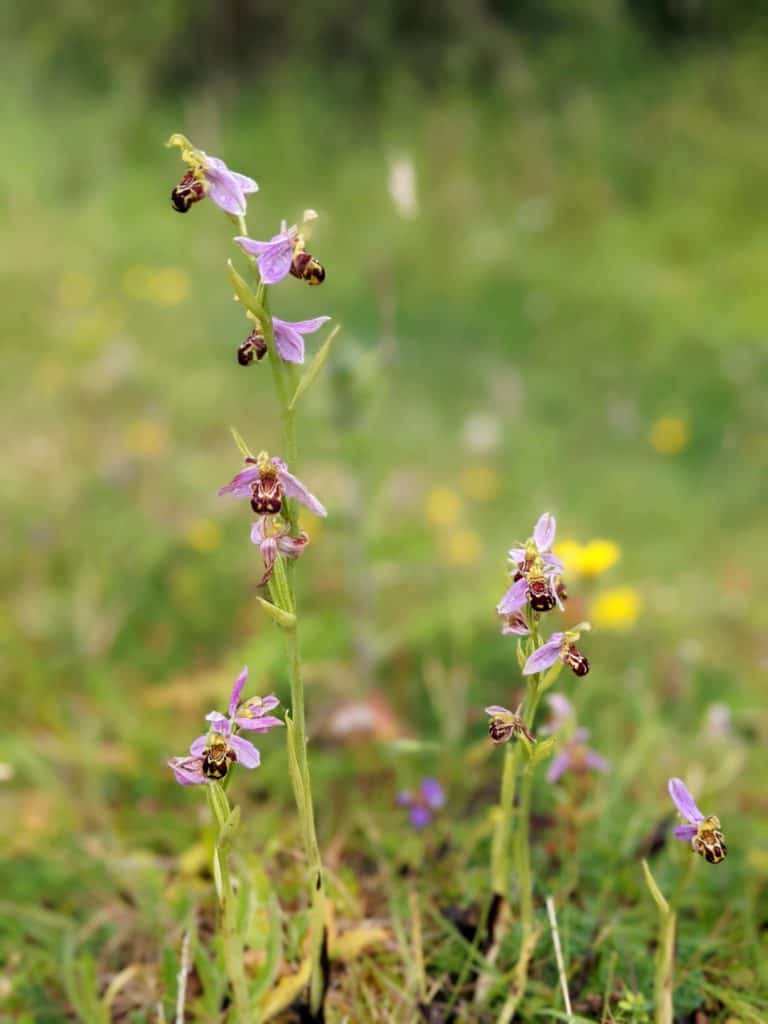
There were plenty of goldfinches in the trees along the trails, and Anne spotted a whitethroat in the brambles, which is the ideal spot for them. There was a family of reed warblers and we managed to spot a green finch before getting back to the visitor centre.
It was great to visit the reserve as part of the course as we got the chance to see birds some of us had never seen before. Having Anne there too really helped us learn so much more about these birds and what to look out for when identifying them. She was a fountain of knowledge and didn’t shy away from any of the groups questions.
The highlights for me really were the oystercatchers and their chicks and the stunning lapwings with their iridescent feathers and prominent crest. It would have been incredible to hear their bird song too as it’s known to be quite unusual.
Overall, it was a fantastic day which only increased our enthusiasm for birds. The group was a wonderful selection of people from all walks of life and Anne’s expert knowledge and teaching made it an unforgettable experience.
If you’d like to join in on the next bird identification course, you can find further details on our website.
If this has inspired you to get out and have your own bird safari, why not take along our bird identification fold out guides to help you easily identify the birds you see.

